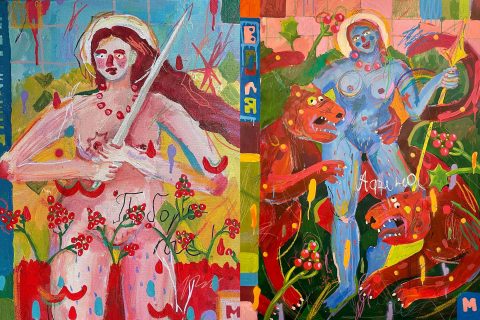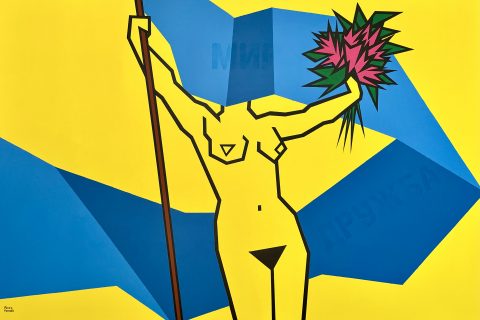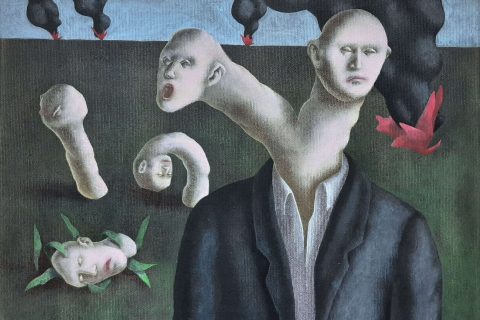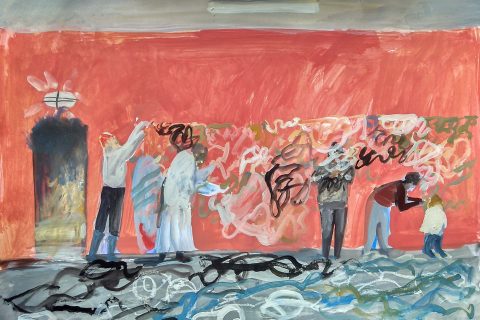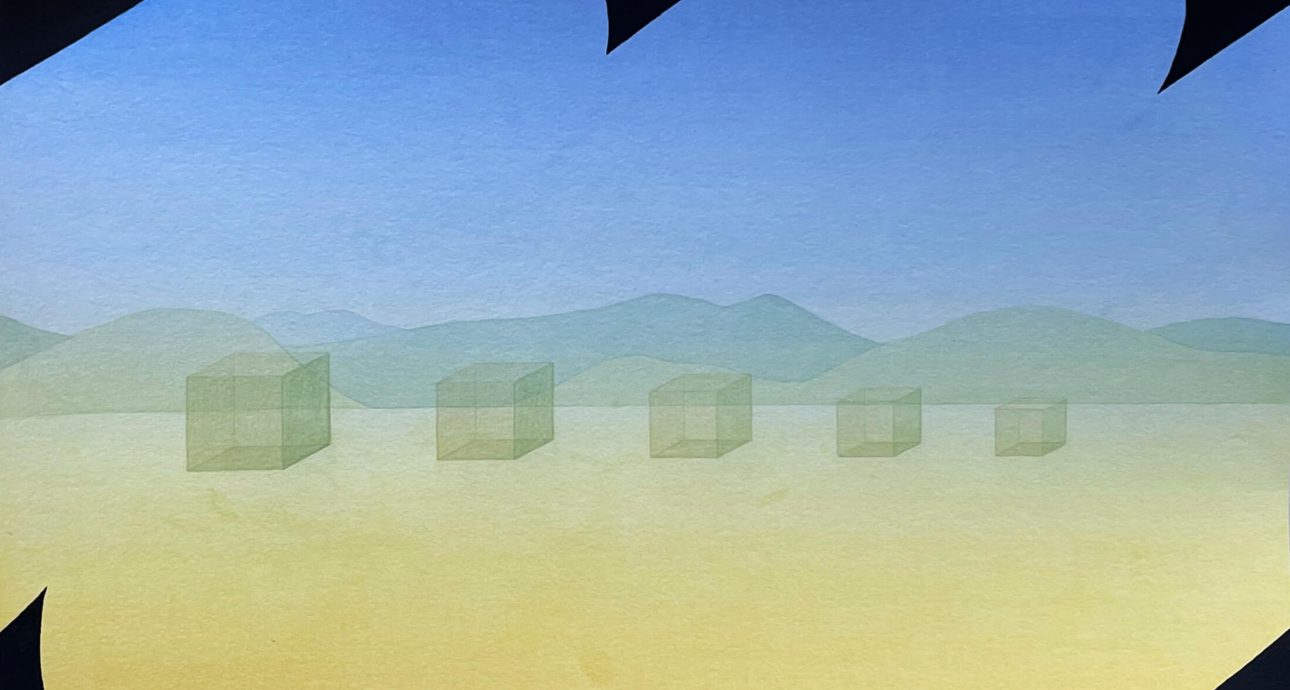
Keep Calm: Sacred Geometry in Oleksandra Tokareva’s Watercolors
Sacred geometry is a mystical belief that the universe is proportionate and structured. According to this belief, the universe is based on certain geometrical figures, like the golden ratio and David’s star, or numbers, like the Fibonacci sequence. These figures and numbers can be found in every religion, but also in worldwide cultural heritage, starting from the pyramids of Egypt and finishing with Leonardo da Vinci’s Vitruvian man.
Sacred geometry paved its way into the Ukrainian tradition too, appearing in the patterns and symbols of vyshyvankas. And Oleksandra Tokareva paints sacred figures on her canvases. She told Bird in Flight what the colors of her paintings mean and how her watercolor technique — washing out — helps her to remain calm.
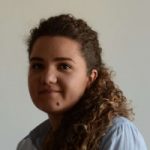
An artist, a member of The Hat art group since 2006. The finalist of a MUHi contest 2010 and PinchukArtCentre Prize 2009. Currently lives and works in her hometown, Mukachevo.
— Let me be honest from the start. I didn’t like the combination of yellow and blue colors before. It didn’t look good to me from an aesthetic standpoint. But after the full-scale invasion, I suddenly felt that these are my colors — our colors — and I found peace in painting in yellow and blue.
The first yellow and blue painting from my war series is covered with black spots. They symbolize that blackness that crawls onto us, but we keep “erasing” it. I still have this feeling — black menace looming over our country.
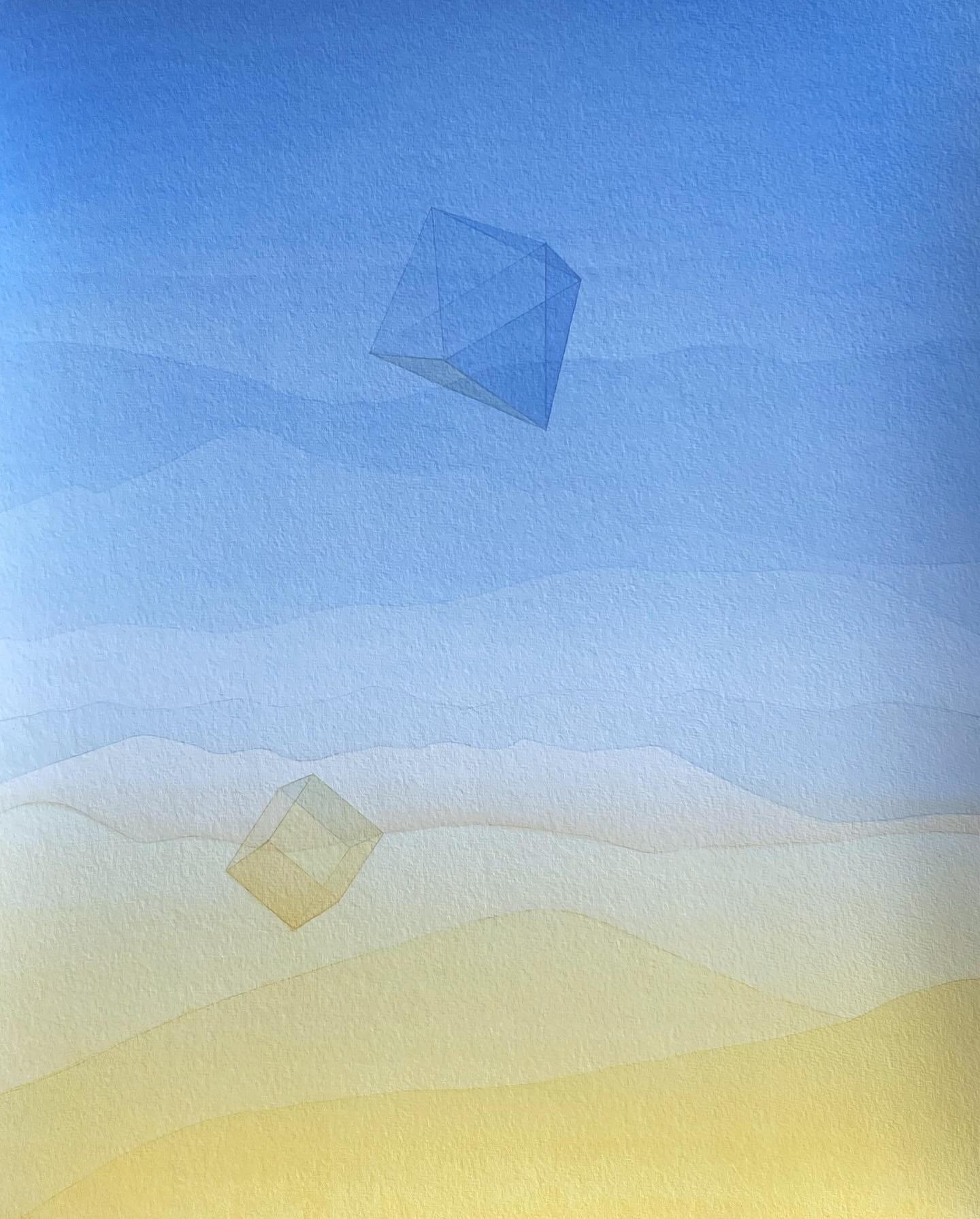
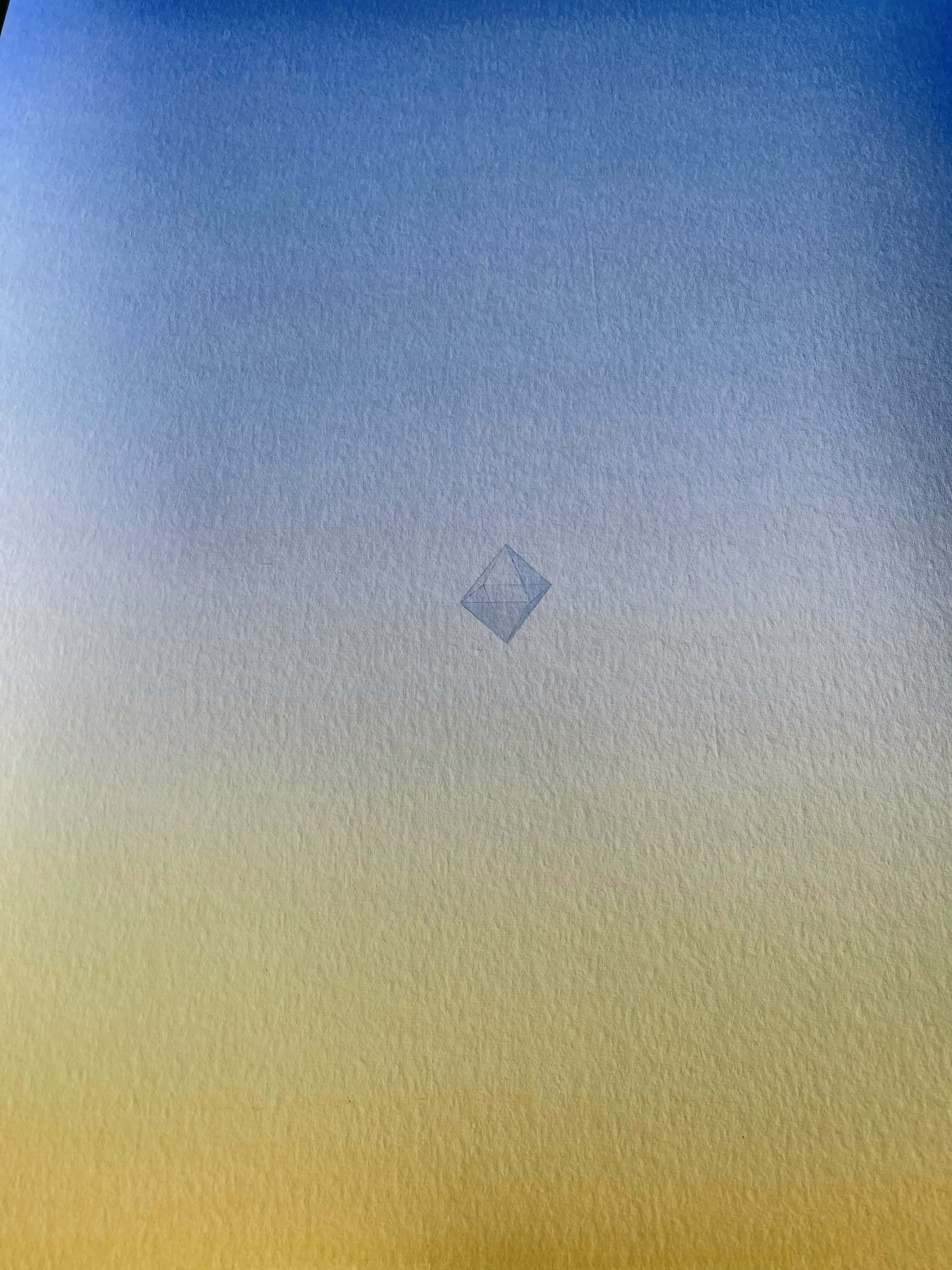
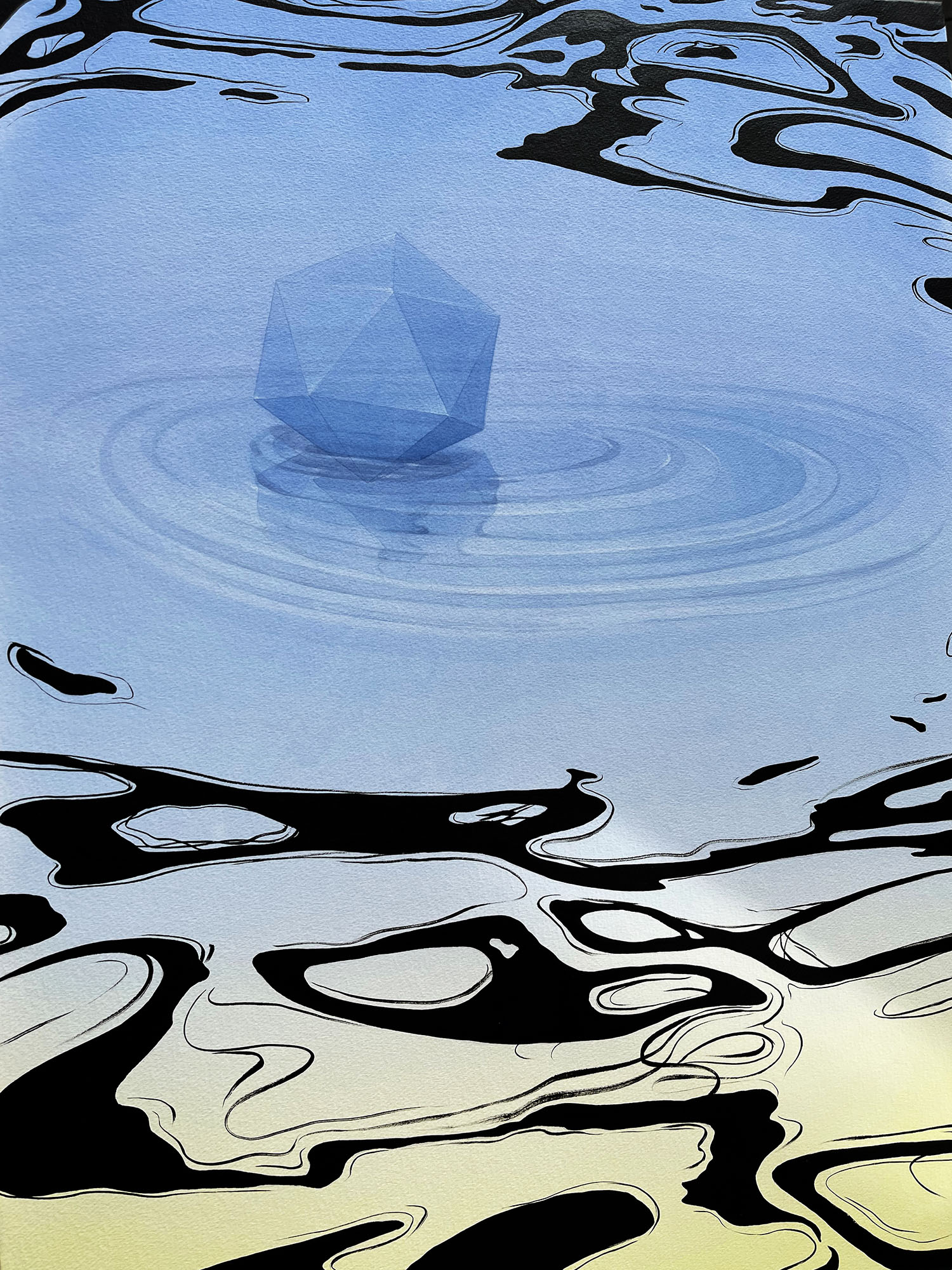
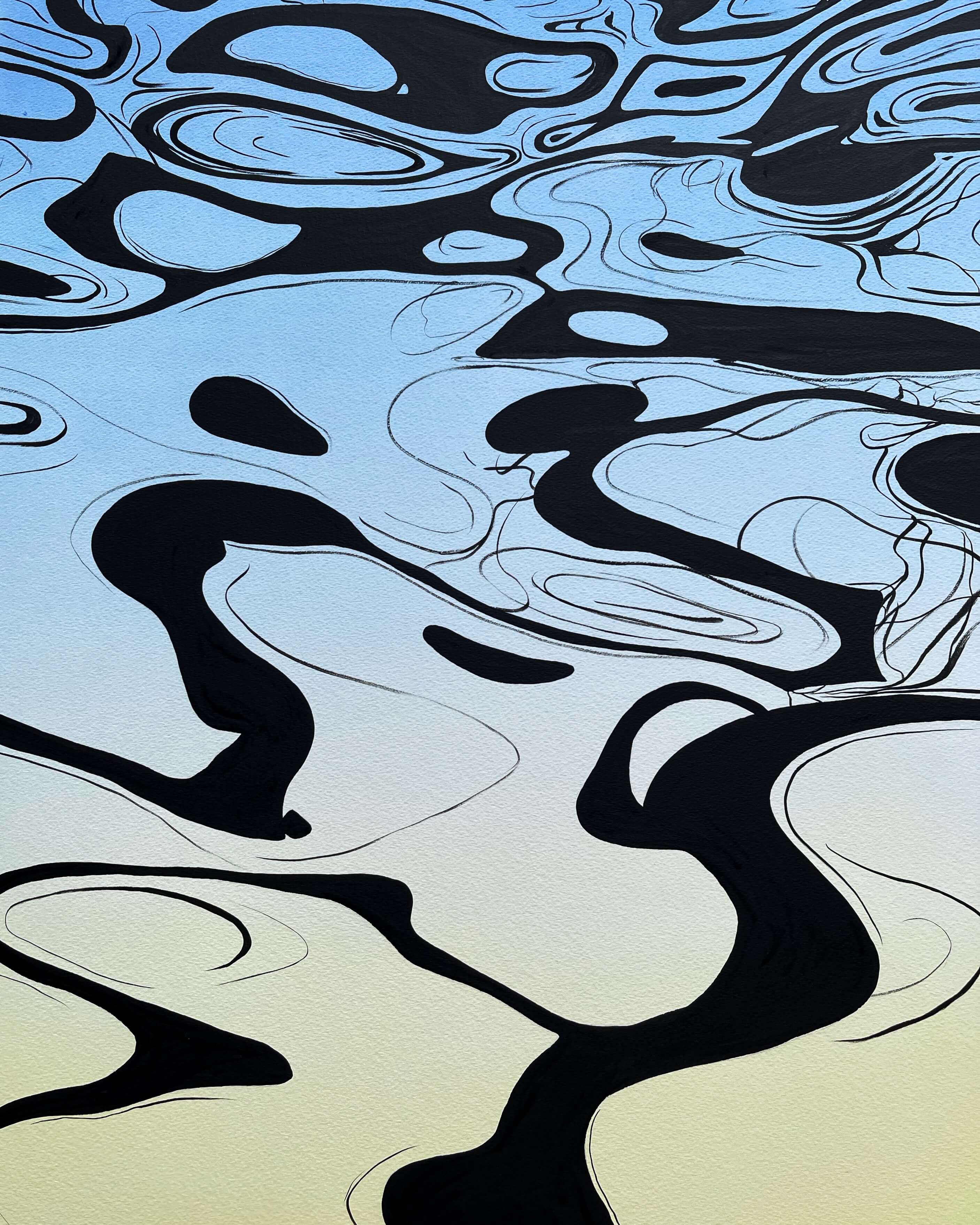
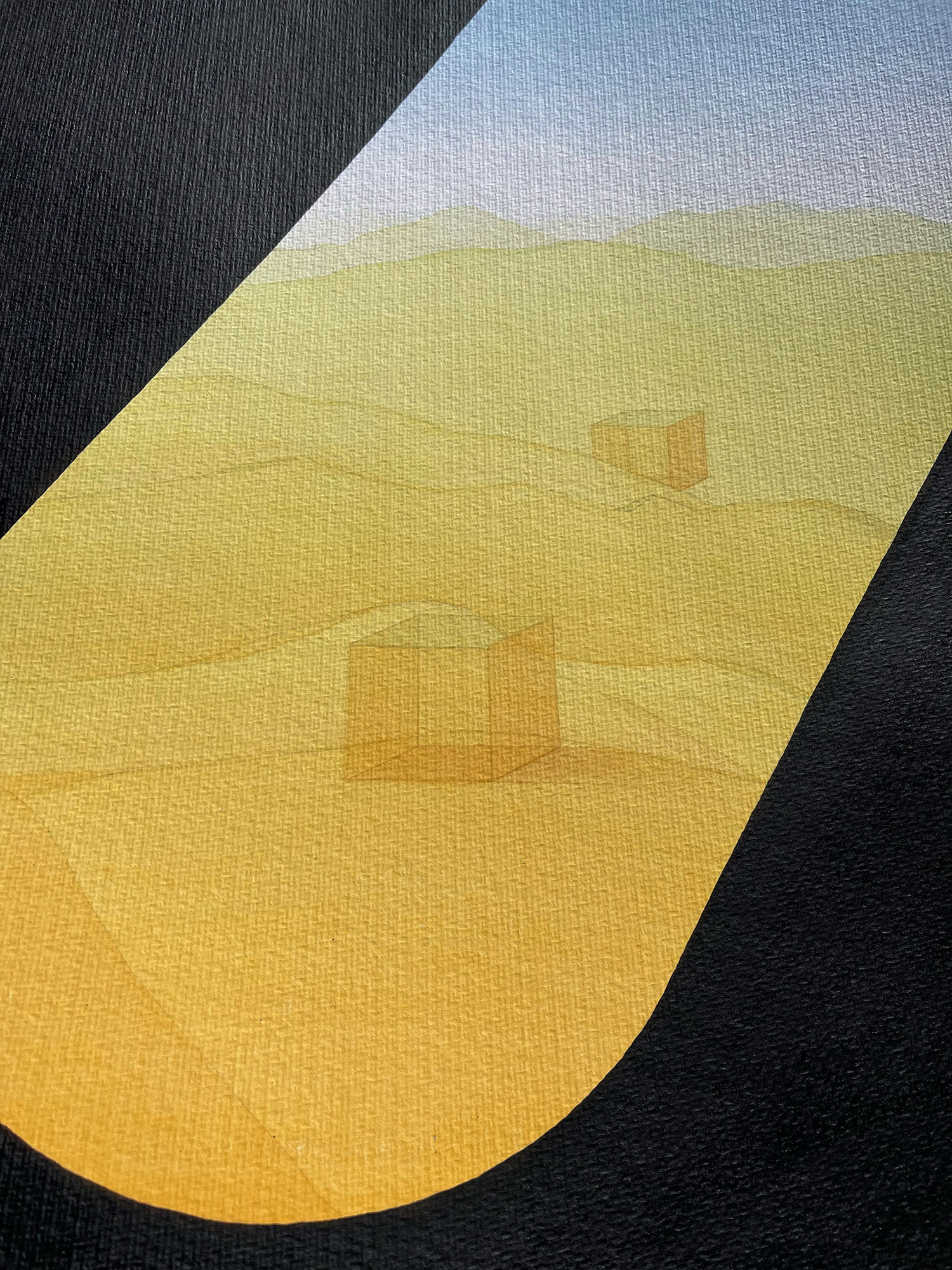
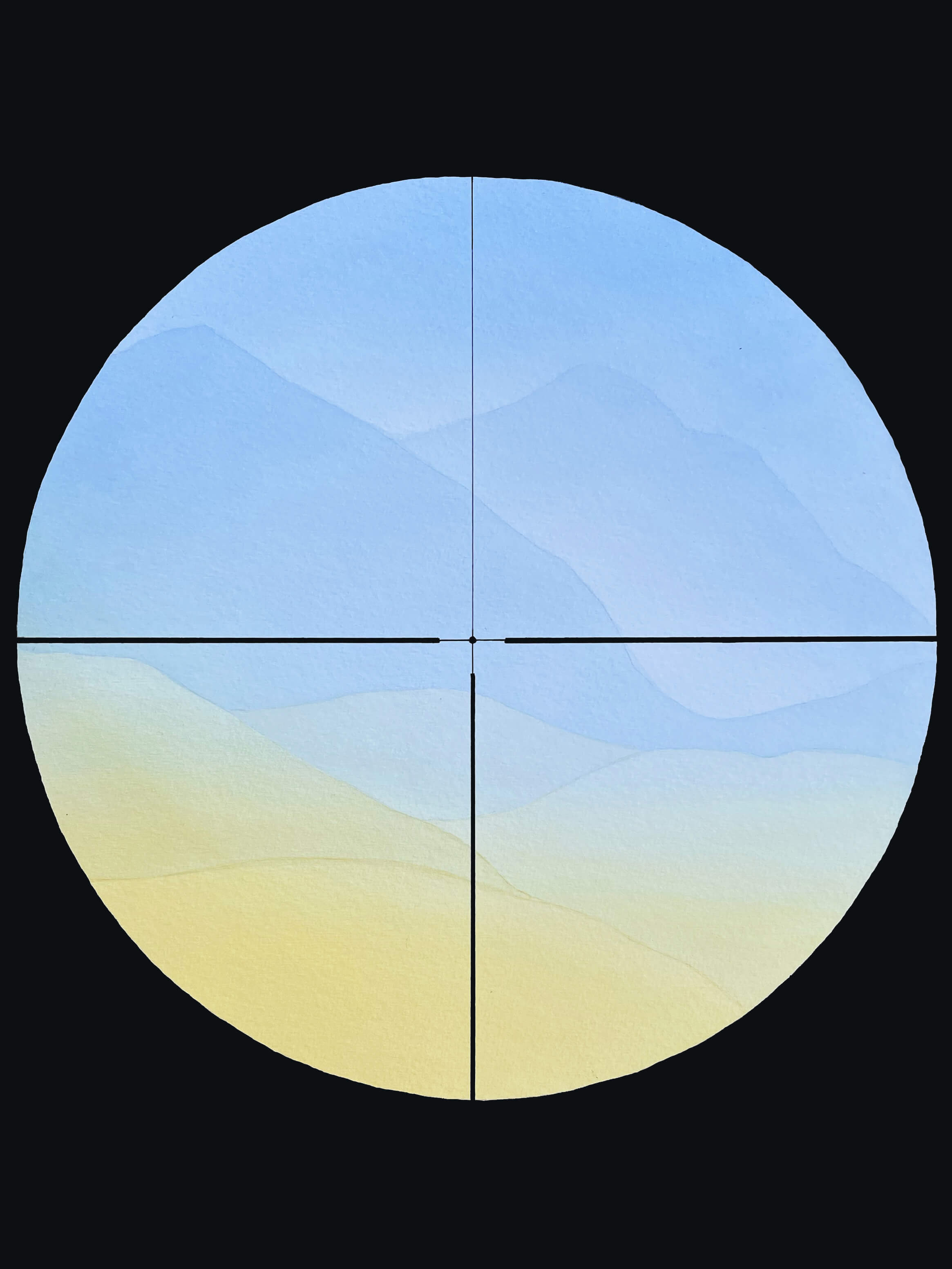
Afterward, my paintings turned red. This is not a typical color for me, since I usually work in calm, natural tones. But back in the day, I felt so livid that I was seeing and painting red. This color symbolizes blood, countless innocent victims of the war, and my rage.
Now the dominant color of my works is green. This is a color of my land, which has become the main focus of my paintings. I felt a powerful bond with my land, an urge to protect it, and an overwhelming desire to see the Russian army getting the hell out of it.
This is a color of my land, which has become the main focus of my paintings.
I was born in Mukachevo, amidst the Carpathians. I went to Kyiv to study, but then I came back home and stayed for five years. Then I headed to the capital once again to pursue my career ambitions, and came back, again. Now I think that living in the Carpathians is my final decision — that’s where I belong. Anytime I can go out and find myself in the woods or by the river — that’s what you can hardly do in busy Kyiv. Nature amazes and inspires me. These mountains and woods are the place where I feel the strongest.
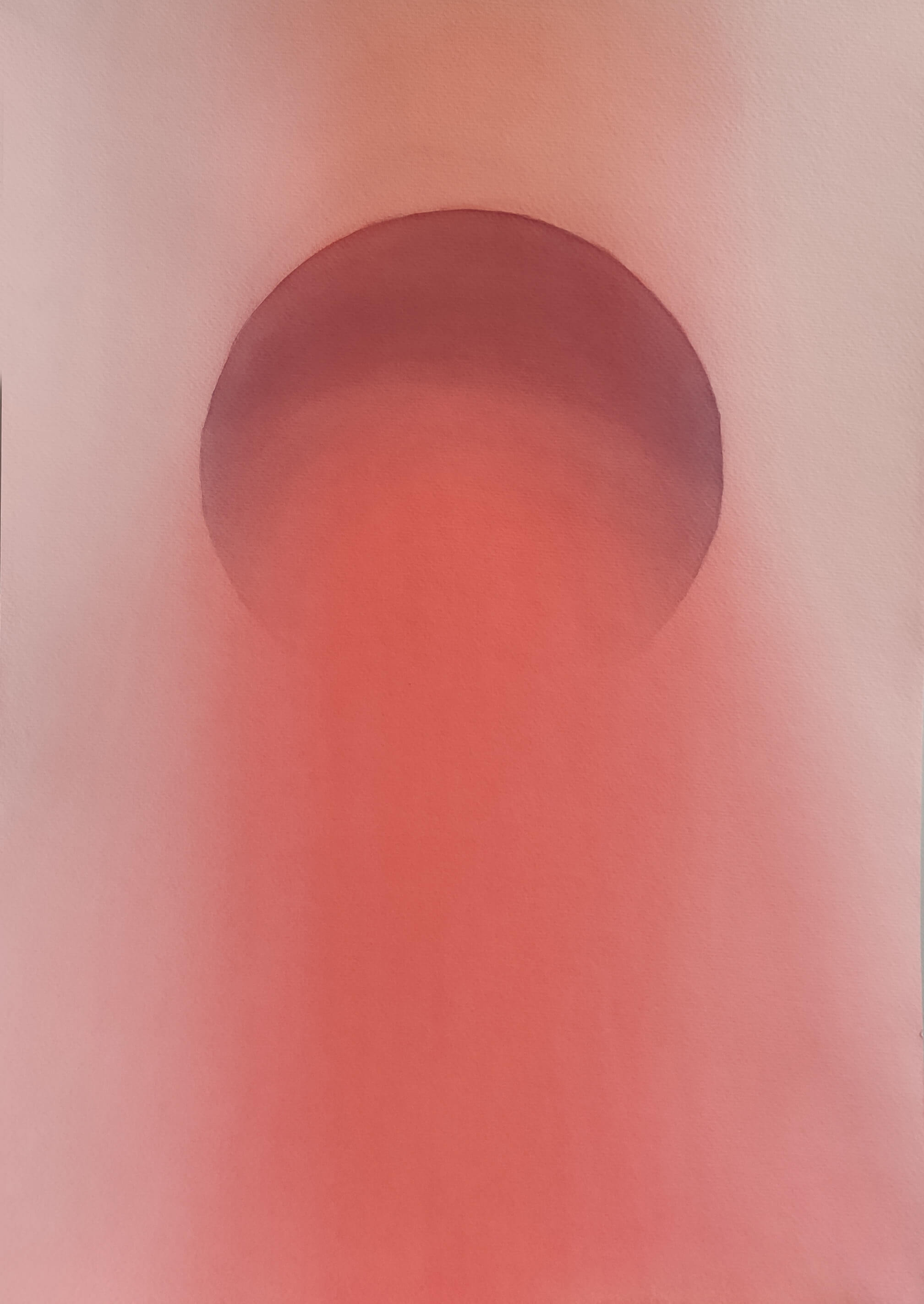
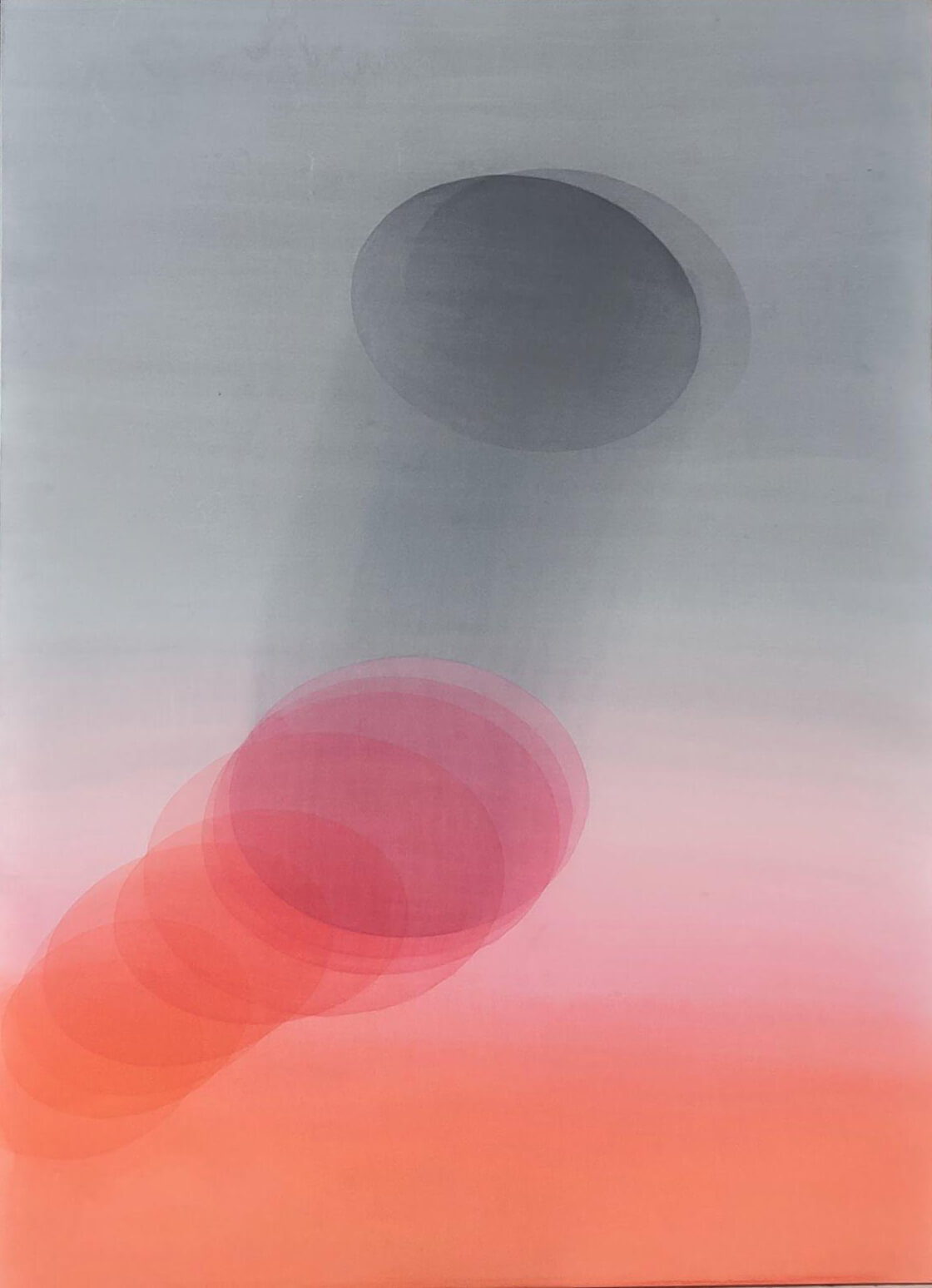
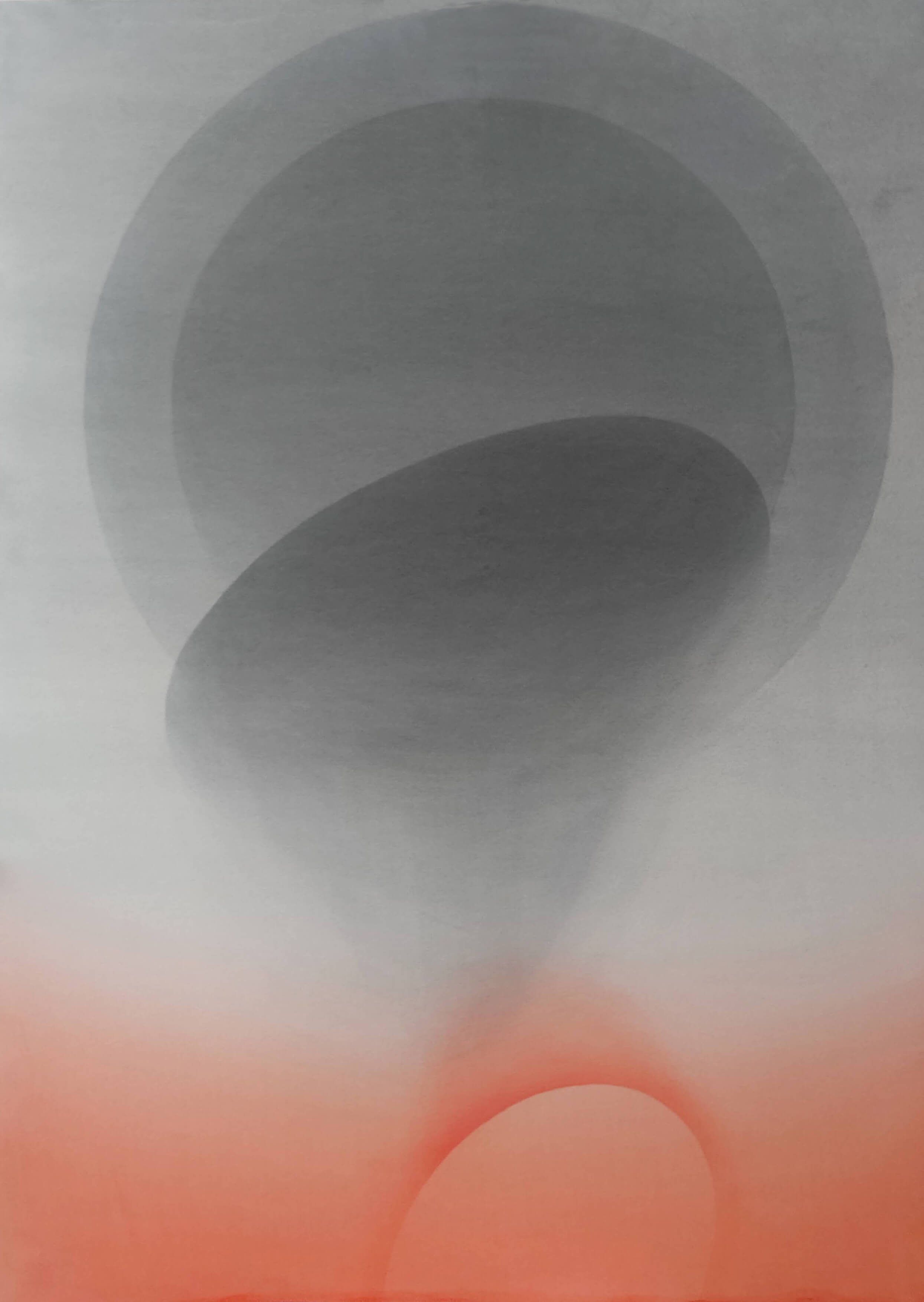
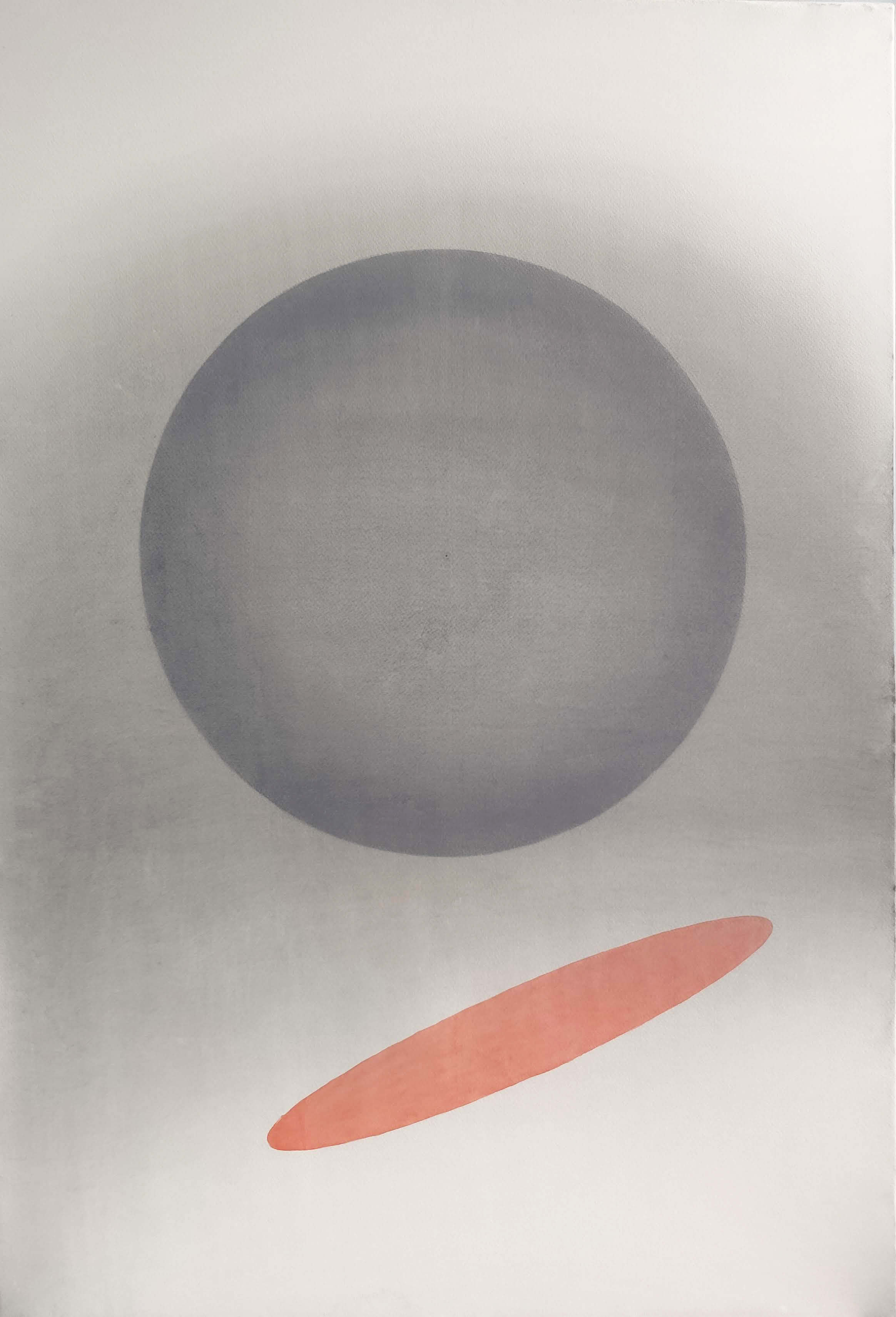
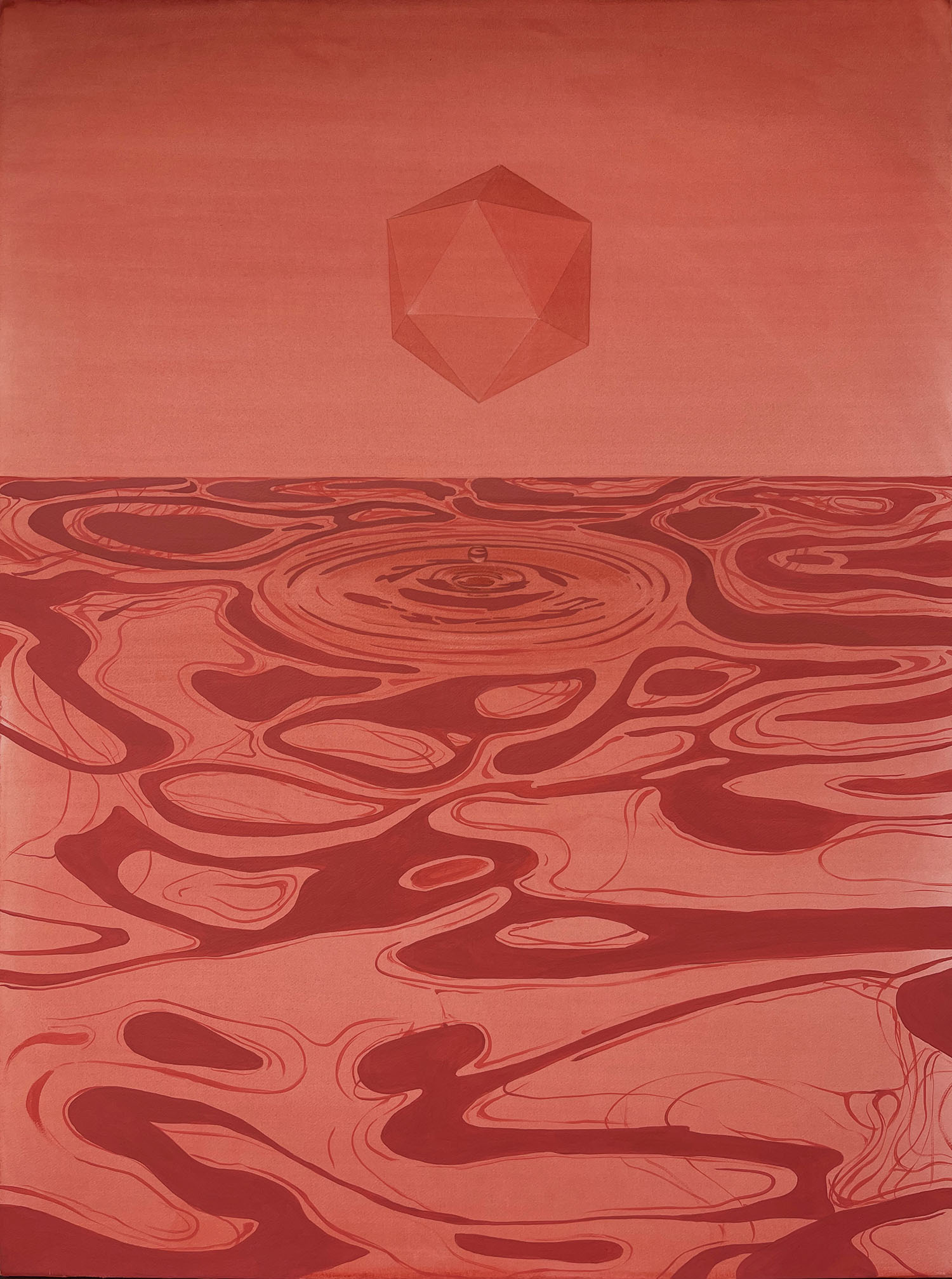
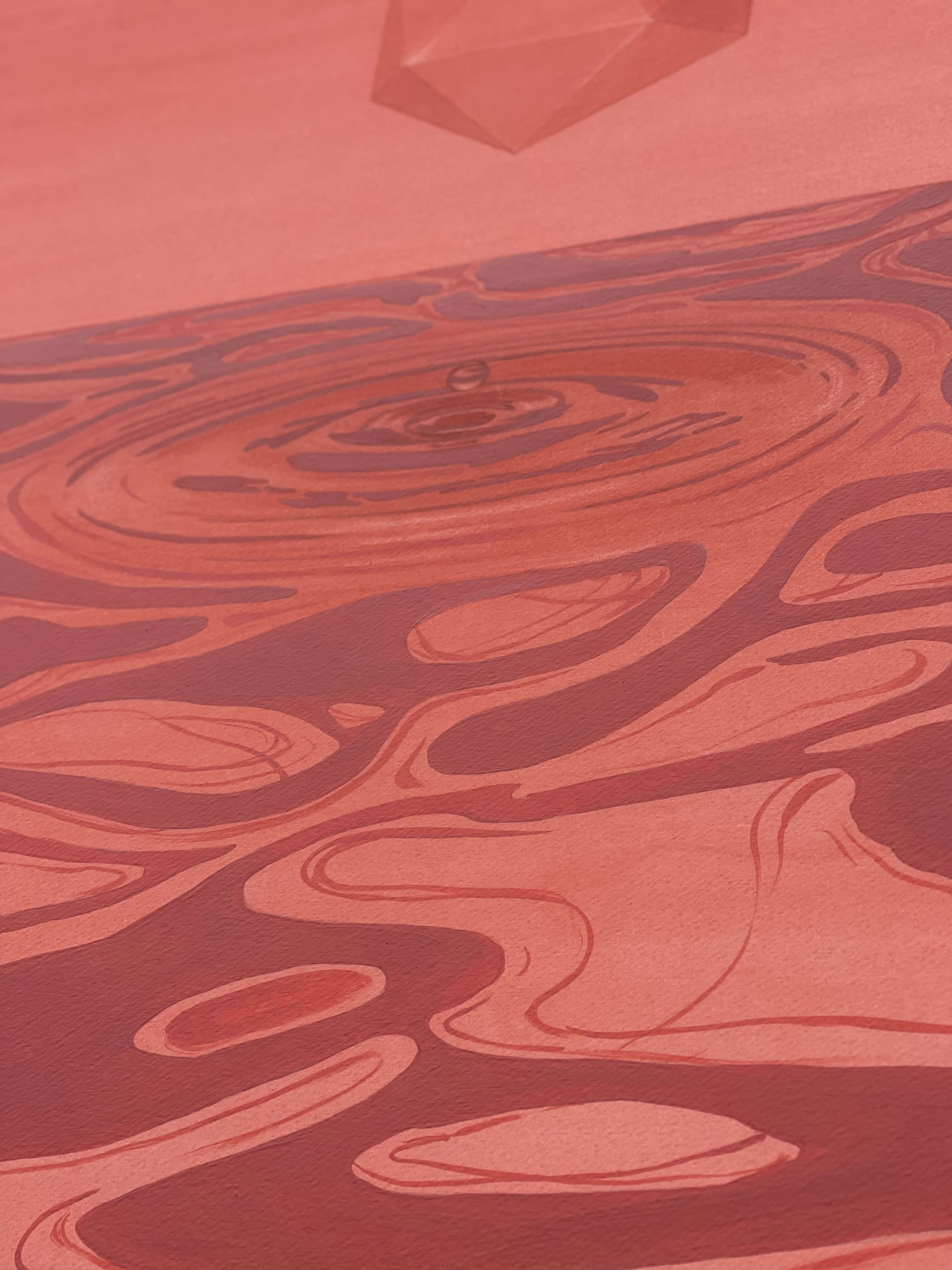
This series of works is my way of going back to the beginning. It applies not only to reflections on nature and human beings, but to sacred geometry, too. I got fascinated with it when I was working on the Immersion project in the early days of my career. I read quite a lot about esoteric and different philosophical concepts. At some point, I came across the idea that the universe is composed of geometrical figures, each of which symbolizes a force of nature. I dedicated only 9 paintings to that topic, and I recently felt that I should dive deeper into it.
For me, sacred geometry is not about mysticism, but rather about sacred nature and our connection to the surrounding world. During the war, this topic became a vital contrast to what was going on. On one hand, there was a wise and eternal nature, filled with everything we needed for a happy living. On the other hand, there was the evil that broke into this tranquility and tried to ruin it. I want to focus on the bright side of this confrontation, the one that is timeless and knows all the answers.
For me, sacred geometry is not about mysticism, but rather about sacred nature and our connection to the surrounding world.
Contemplating and painting nature is my unchanging way to remain calm and support my mental health. My meditative watercolor technique also gives me an upper hand with that. This technique is called washing out. Here is what it looks like. I prepare my watercolors in several bowls — in each bowl, the color is lighter. The last bowl contains clear water. Then I start painting in layers — the most saturated color goes on top, the lighter colors follow till the bottom of the canvas. There can be up to 30 layers on one painting. I use a hair blower to dry out the canvas between every new round of layering. This is a very slow technique, it requires concentration and diligence. I learned it when I was studying at the Kyiv University of Architecture. Future architects use the washing out technique to add volume, depth and shadows to their drawings.
This technique is not for everyone, some people are just too expressive for it. As for me, the washing out technique mirrors my inner state perfectly. But that hasn’t always been the case. I didn’t like working with watercolors before, and used to think that true artists only paint with oil. Watercolors are quite hard to master. You can’t fix or repaint anything. But I realized that watercolors allow me to express what I feel and imagine better than any other medium.
The washing out technique mirrors my inner state perfectly.
Painting is not only my way to calm down, but to showcase the emotions of the whole nation. With that in mind, painting is and will always be a powerful tool to express one’s political position. I wasn’t into politics before and took a little interest in active civil society. But there is a moment in everyone’s life, I guess, when you can’t stay aside any longer.
When the war began, I was constantly swinging from anger, hatred, and disgust, to an overwhelming desire to live and appreciate every moment that I have. Now I’ve landed upon a stubborn determination to stay at home, to work hard and never give up till the day of our victory. I know for sure that when it comes, we will see a huge rise of the Ukrainian culture and art all over the world.
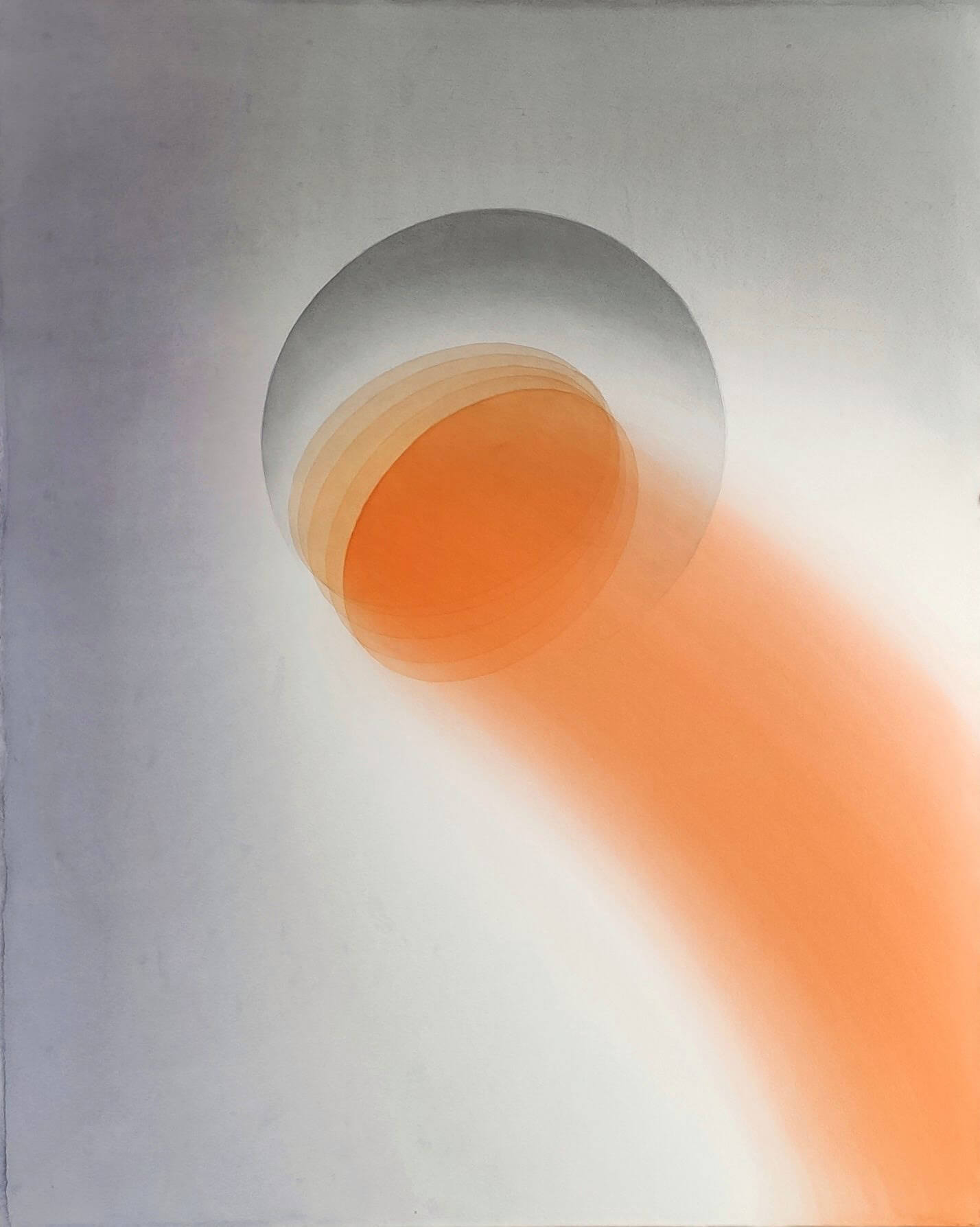
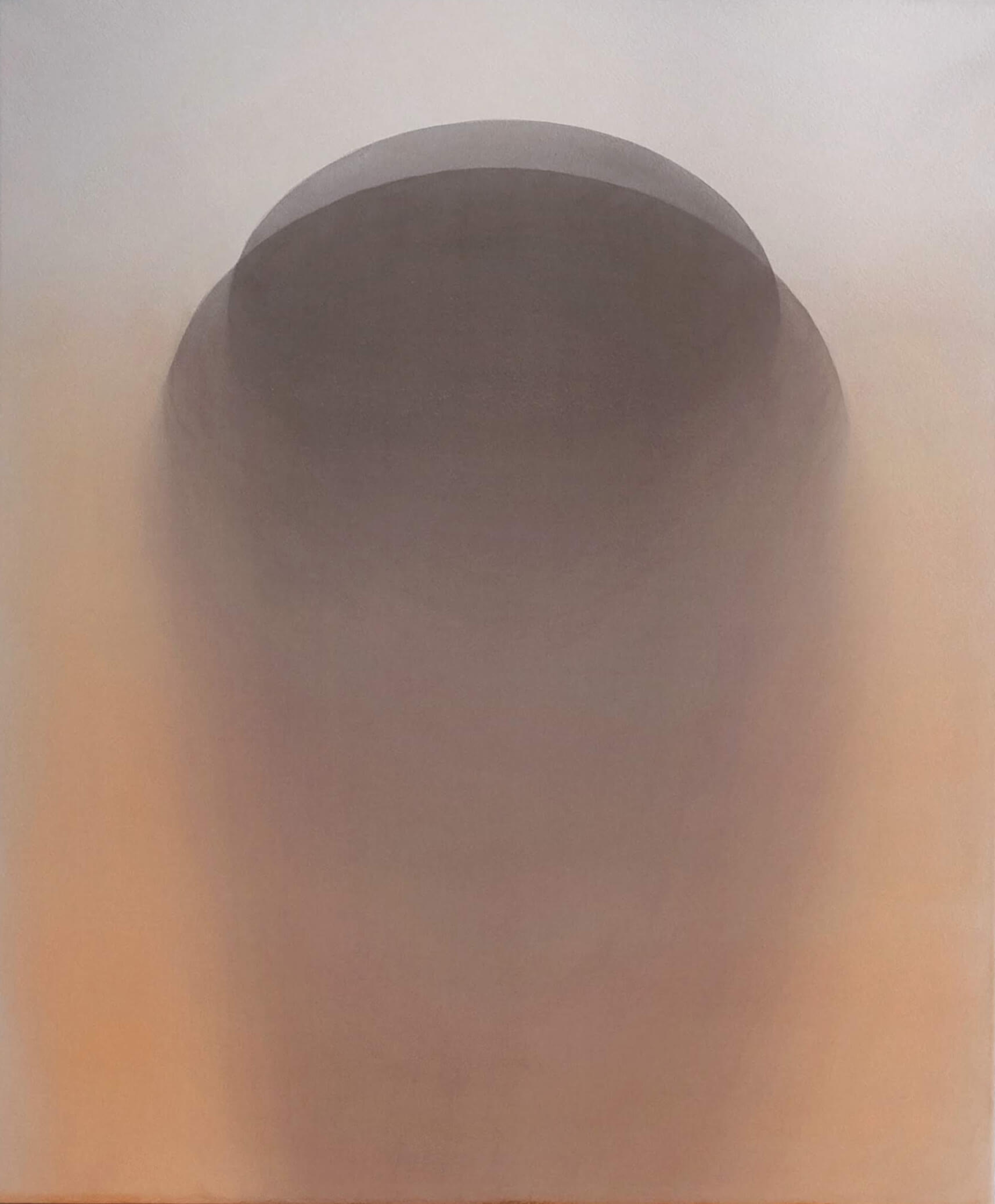
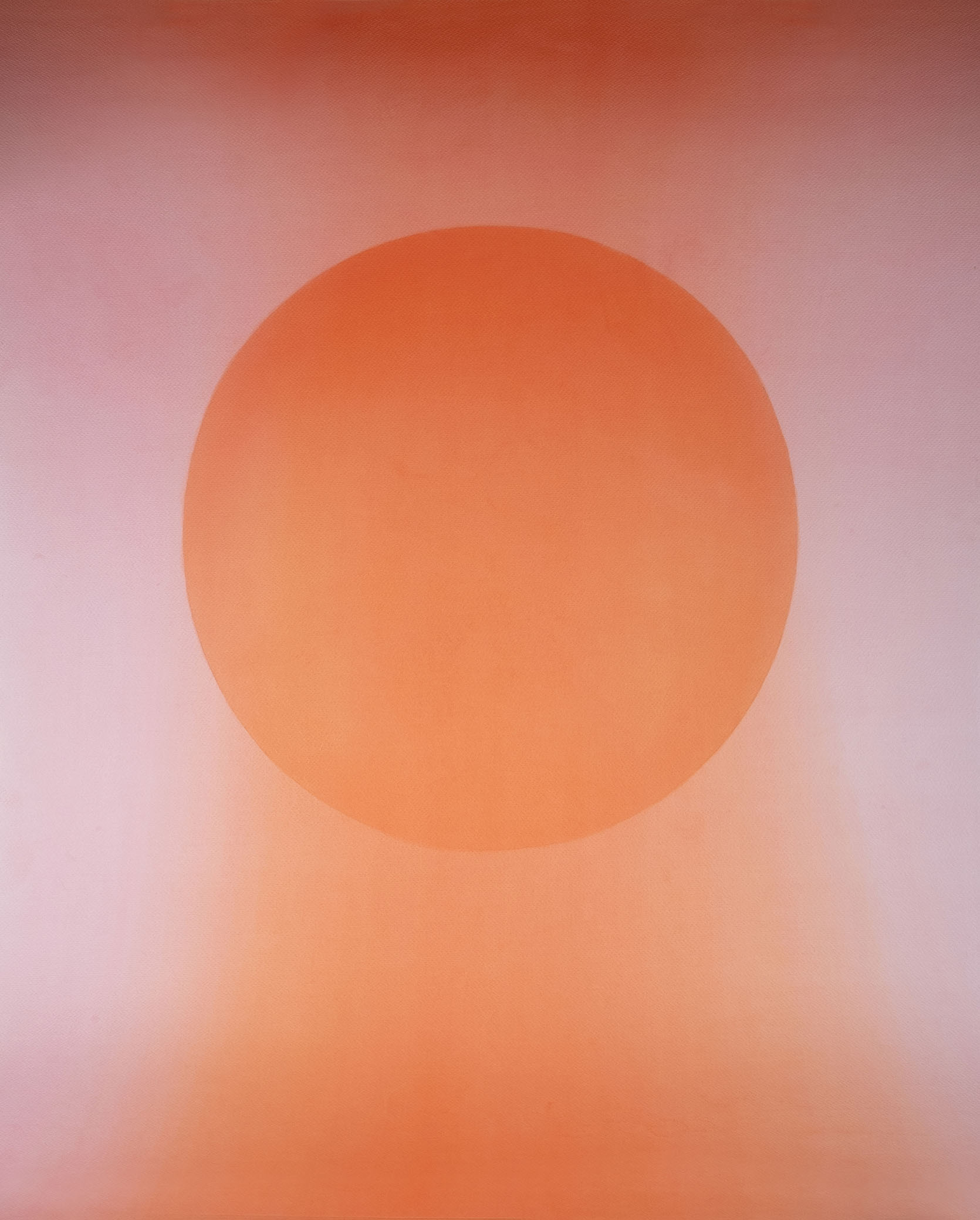
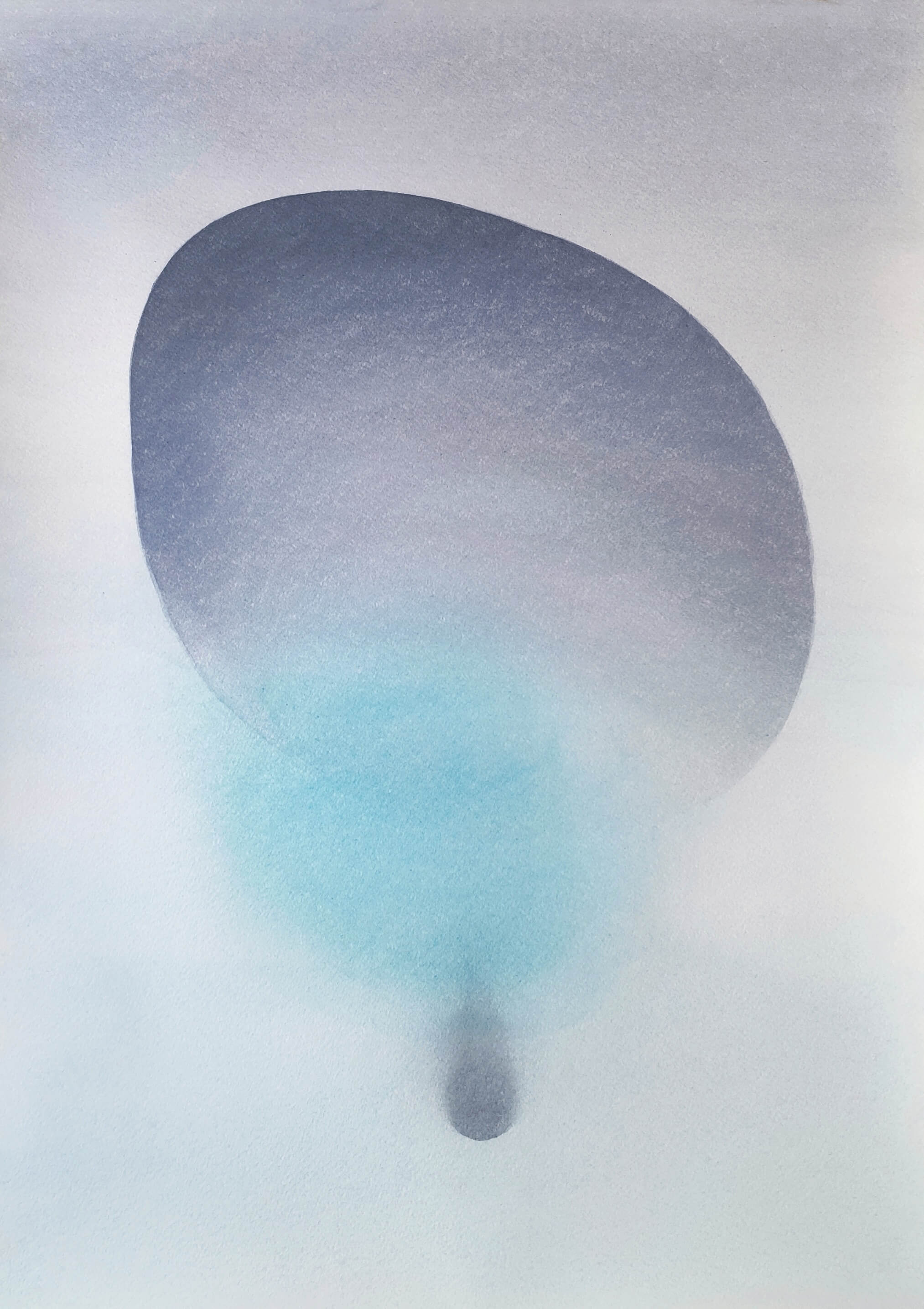
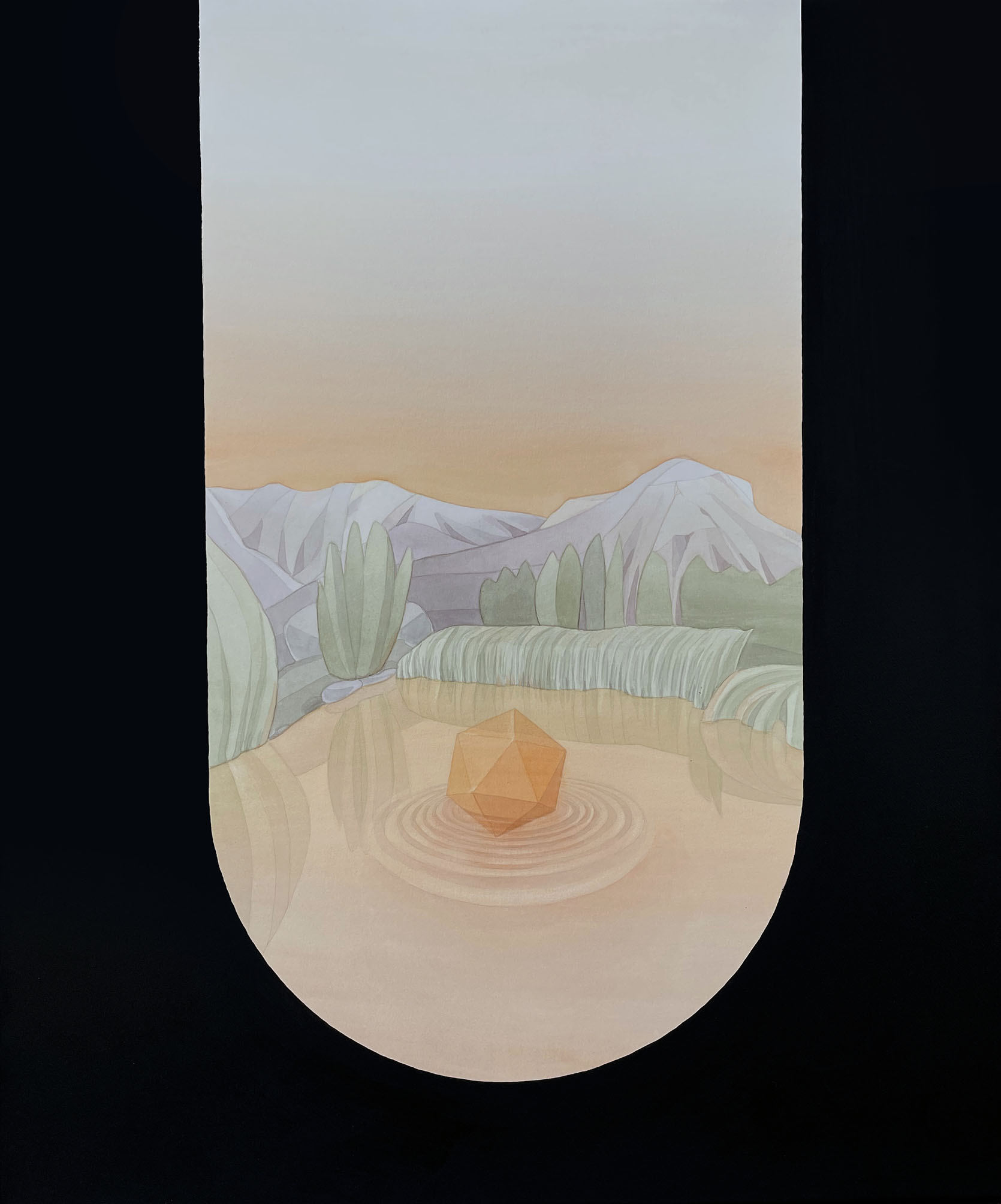
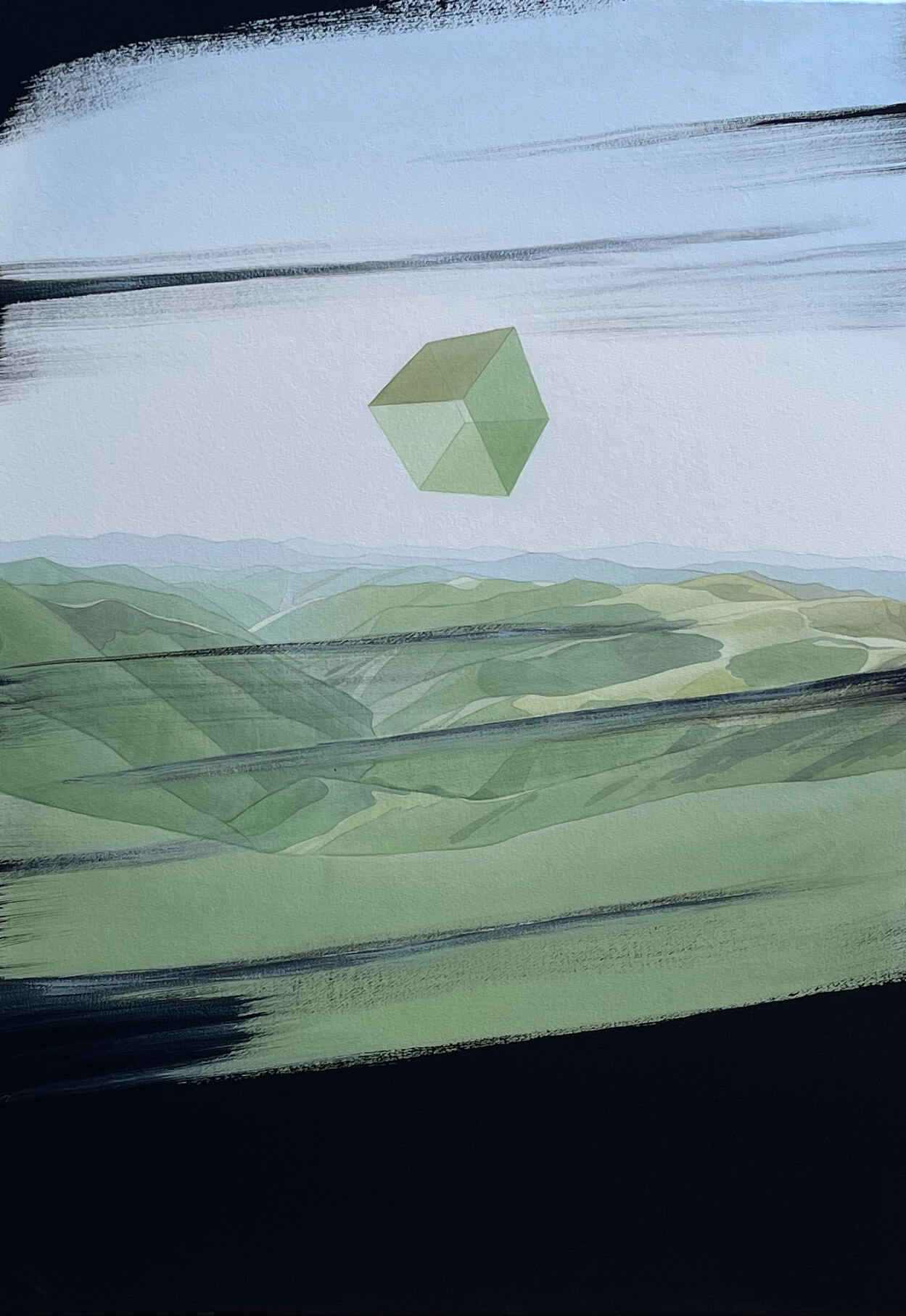
New and best
